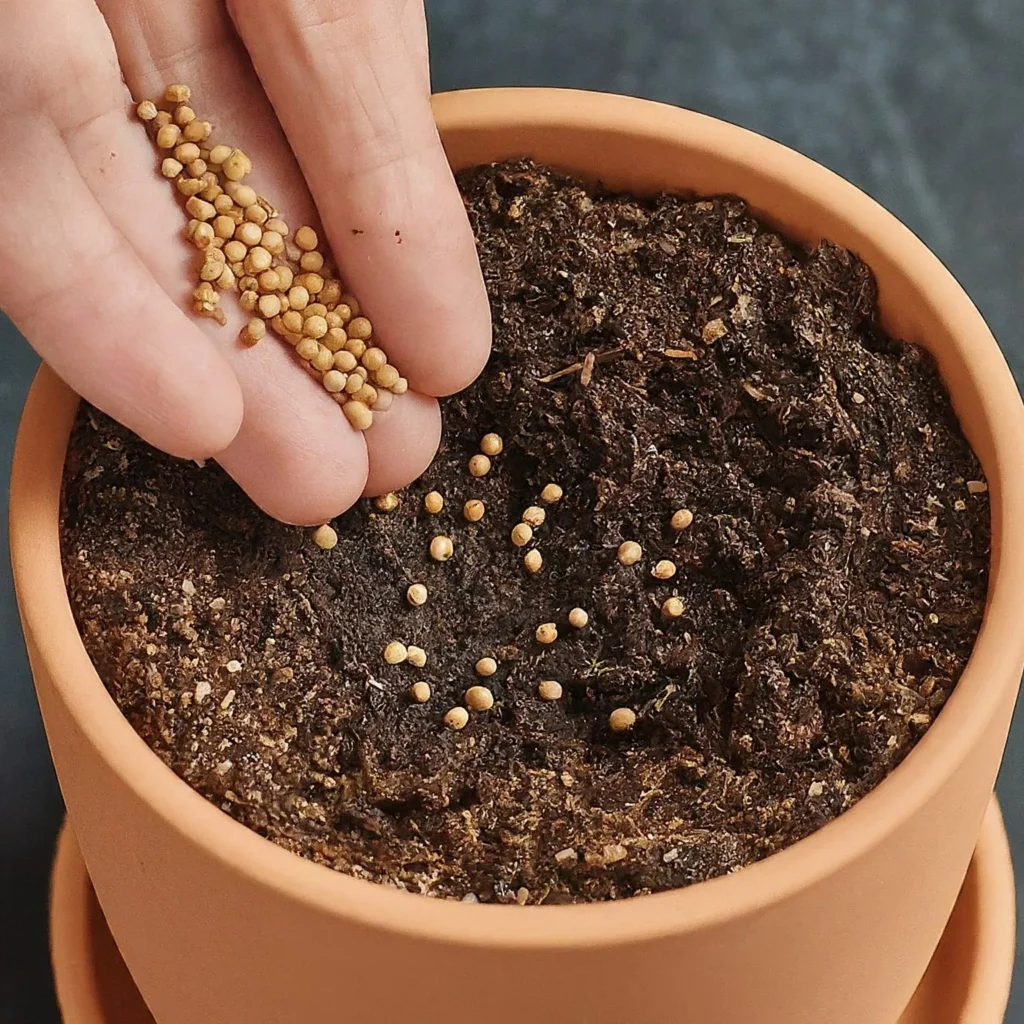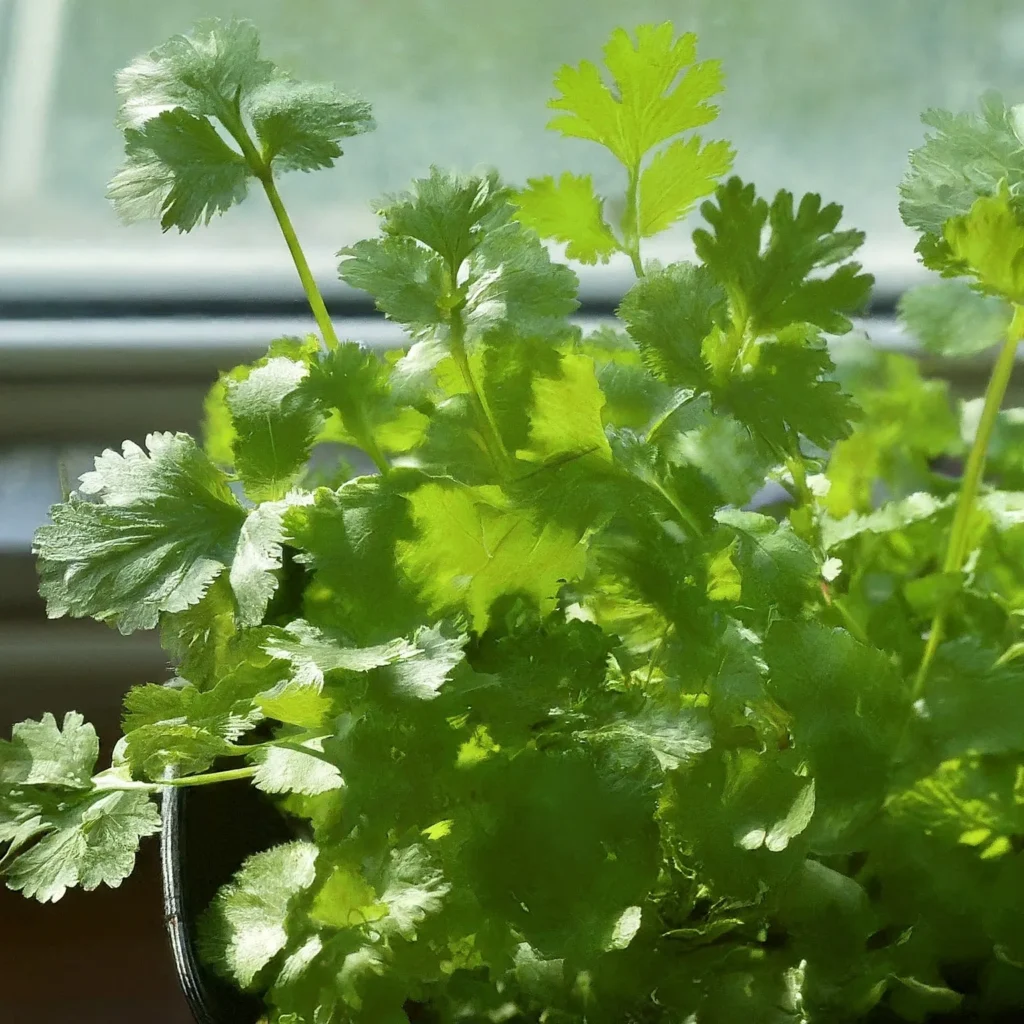Cilantro, with its bright, citrusy flavor, elevates countless dishes from tacos and guacamole to curries and stir-fries. But did you know you can easily grow your fresh cilantro at home, regardless of whether you have a garden or just a sunny windowsill?
Table of Contents
ToggleWhy Grow Your Cilantro?
- Freshness: Homegrown cilantro boasts a far superior flavor compared to store-bought varieties that often wilt and lose their potency quickly.
- Cost-effective: Planting your own eliminates the need to constantly buy cilantro, saving you money in the long run.
- Organic option: Growing your own gives you control over the environment, allowing you to avoid pesticides and chemicals.
- Sense of accomplishment: There’s a unique satisfaction in harvesting fresh herbs grown with your care.
Planting and Care: A Step-by-Step Guide
- Timing: Cilantro thrives in cool weather. Aim to plant seeds in early spring or fall when temperatures are between 50-70°F (10-21°C).
- Location: Choose a spot that receives 4-6 hours of direct sunlight daily. If living in a hot climate, provide some afternoon shade.
- Soil: Cilantro prefers well-draining, fertile soil. Amend your in-ground soil with compost or use a high-quality potting mix for containers.
- Planting: Sow seeds directly into the prepared soil ¼ inch deep, scattering them lightly. Water gently and keep the soil consistently moist but not waterlogged.
- Thinning: Once seedlings reach 2-3 inches (5-7.5 cm) tall, thin them to 4-6 inches (10-15 cm) apart to allow proper growth.
- Harvesting: Start harvesting outer leaves once the plant reaches 6 inches (15 cm) tall. Regularly pinch off leaves to encourage bushier growth.
Tips to Prevent Bolting (Flowering)
- Plant in succession: Sow seeds every 2-3 weeks to ensure a continuous harvest and avoid all plants bolting at once.
- Choose slow-bolting varieties: Look for varieties like “Santo” or “Slow Bolt” known for their resistance to flowering.
- Provide afternoon shade: Protect your plants from the harshest afternoon sun, especially in hot climates.
- Keep soil cool: Mulch around the base of the plants to retain moisture and regulate soil temperature.
FAQs about Growing Cilantro
- Can I grow cilantro indoors? Yes, absolutely! Use a sunny windowsill and a well-draining container with drainage holes.
- How long does it take to harvest cilantro? You can start harvesting leaves within 4-6 weeks of planting.
- What happens if my cilantro bolts? The leaves will become bitter and unusable. However, you can still collect the seeds (coriander) for future plantings or culinary use.
- Does cilantro need fertilizer? Generally, not. The compost or organic matter mixed into the soil should provide sufficient nutrients.
- How often should I water cilantro? Water deeply when the top inch of soil feels dry, but avoid overwatering.
- Can I replant cilantro? Yes, you can harvest seeds from your bolted plants and sow them directly into the soil.
- What are some common pests and diseases that affect cilantro? Aphids and powdery mildew are occasional problems. Neem oil spray or insecticidal soap can be used for control.
- Does cilantro have any side effects? Cilantro is generally safe for most people, but those taking blood-thinning medications should consult their doctor before consuming large quantities.
- How long can I store fresh cilantro? Store washed and dried cilantro in a sealed container in the refrigerator for up to a week.
- What are some good companion plants for cilantro? Lettuce, spinach, and other leafy greens are good choices as they have similar growing requirements.
By following these simple steps and tips, you can enjoy the rewarding experience of growing your flavorful cilantro, adding a fresh touch to your culinary creations.

Beyond the Basics: Additional Tips for Cilantro Success
- Succession planting: As mentioned earlier, planting seeds every 2-3 weeks ensures a constant supply of fresh leaves. You can even stagger planting in different locations to extend the harvest window further.
- Companion planting: Cilantro thrives alongside certain plants like lettuce, spinach, and tomatoes. These plants create a microclimate that benefits cilantro by providing shade and deterring pests.
- Deadheading: If your cilantro does bolt, don’t despair! Pinch off the flower heads (deadheading) to encourage the plant to produce more leaves. While the quality may not be as pristine, you can still use the leaves for less critical culinary applications.
- Saving seeds: Once your cilantro bolts and produces coriander seeds, allow them to dry completely on the plant. Collect the seeds when they turn brown and store them in an airtight container in a cool, dark place for future planting.
Cilantro and Sunlight: A Necessary Relationship
Cilantro cannot grow without any sunlight. While it doesn’t require the intense sun exposure of some vegetables, it still needs at least 4-6 hours of direct sunlight daily for optimal growth and healthy leaf production.
However, you can still grow cilantro indoors even if you lack a south-facing window. Here are some solutions:
- Position your container near a bright, south-facing window that receives the most sunlight throughout the day.
- Supplement with grow lights: If natural light is insufficient, invest in grow lights specifically designed for indoor plant growth. Aim for lights offering a Daily Light Integral (DLI) of at least 12 mol/m²/day and position them 6 inches away from the plant canopy.
Cilantro’s Growth Timeline: From Seed to Harvest
The time it takes for cilantro to grow from seed to harvest can vary slightly depending on the specific variety and growing conditions. However, here’s a general timeline:
- Germination: Seeds typically germinate within 7-10 days after planting.
- Seedling stage: The next 3-4 weeks are spent developing true leaves and establishing a strong root system.
- Harvesting: You can start harvesting outer leaves once the plant reaches 4-6 weeks old and is at least 6 inches (15 cm) tall. Regularly pinching off leaves encourages bushier growth and extends the harvest period.
Remember, these are general estimates, and your experience may differ. Keep an eye on your plants and adjust your care routine as needed for optimal results.








